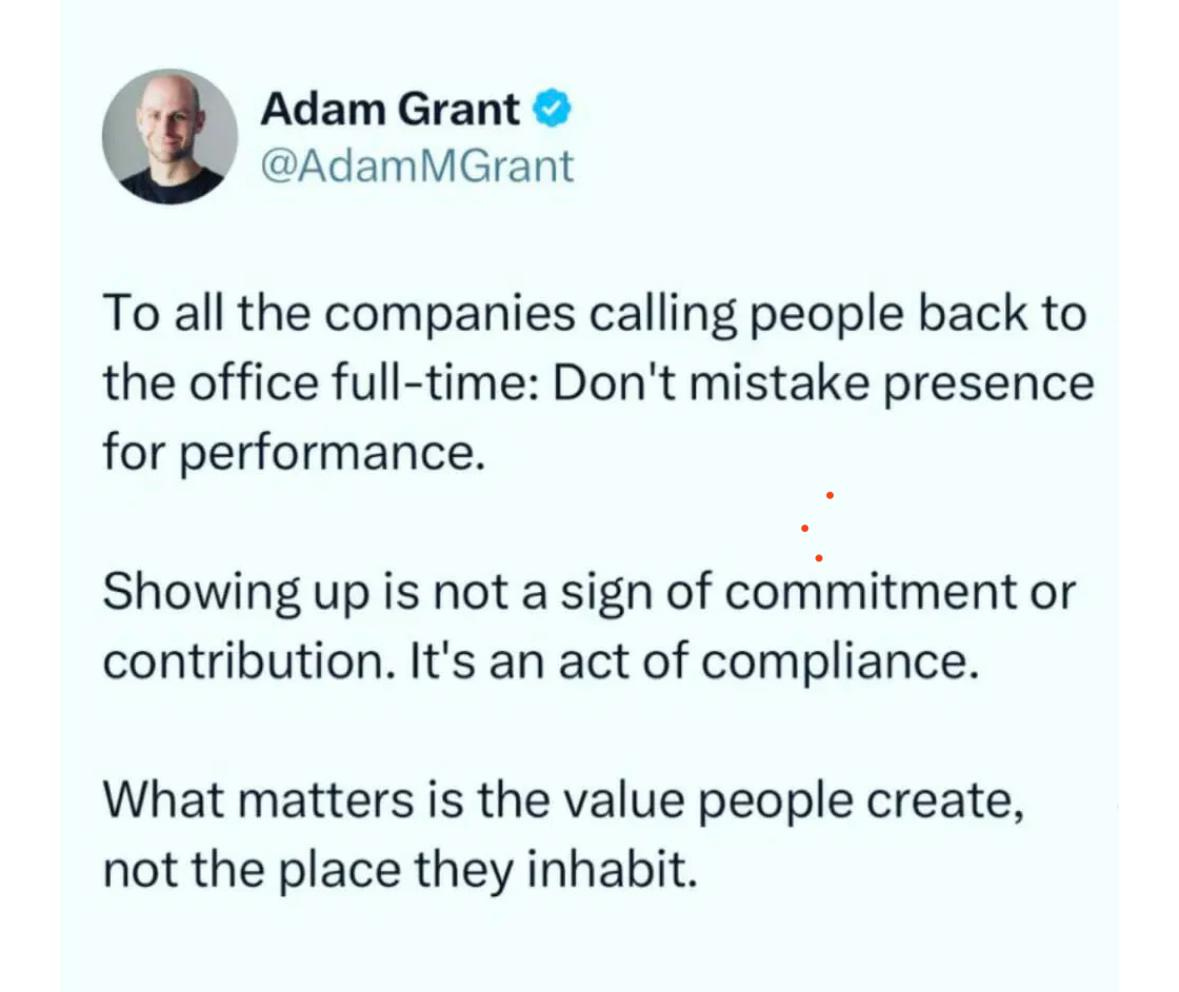A communication lesson from Amazon's RTO mandate
RTO, hybrid work and communications lessons for leaders
I write Future Work/Life to help you build great teams and careers. If you find it interesting, please share it!
This week, Amazon made headlines for calling staff back to the office full-time in January. Is it the right move?
Well, for starters, why so many headlines? Size. Prominence. A feeling that data-driven Amazon must know something we don’t. And the fear that where Amazon leads, others will likely follow.
While they’re not the first organisation to do this, their decision certainly bucks the general trend. It also flies in the face of the research and data showing what people want (TL;DR: some form of hybrid work).
Most importantly, unless there’s something Amazon isn’t sharing, there’s little evidence that a full office return will improve performance.
So, time will tell, but for now, I’m more interested in how they communicated it.
The Why, not the Where
The Future Work/Life podcast is back up and running. The first guest of the new series is Nancy Duarte, who knows a thing or two about communication. Not only is she an advisor and coach to leaders of the world’s largest companies, she’s famous for breaking down the secrets of legendary speeches by Abraham Lincoln, Martin Luther King Jr., and Steve Jobs.
As she put it on the pod:
“Leaders often think their job is to project certainty, but real connection comes when they communicate honestly—even when the answer is, ‘I don’t know yet.’ It’s not just about making decisions, it’s about explaining the reasoning in a way people can understand.”
In the absence of certainty on how an RTO mandate will influence performance, it’s hard to see the logic. If I were one of those Amazon employees whose lives are affected by a significant policy shift, I’d be hoping for something a little more empathetic and emphatic from the big boss.
While location remains the most prominent talking point in the future of work conversation, it’s simultaneously way down the list of factors impacting business growth while disproportionately influencing employee experience—for the worse, in this case.
Adam Grant hit the nail on the head:
Or, in the words of next week’s podcast guest, Chloe Combi:
“It’s about the Why, not the Where.”
Data Speaks Louder Than Mandates
What are the likely consequences?
Stanford professor and leading remote work researcher Nick Bloom’s research suggests that forcing people back into the office may increase quit rates by up to 30%. His study in Nature found that reducing in-office days from five to three led to a 35% drop in people quitting. Employees also…
“…value hybrid at about the same as 8% more pay, so removing hybrid is going to be similar to an 8% pay cut.”
So, again, understanding why is critical.
None of which is to say this is the wrong decision.
Choice is a good thing. Companies have every right to find the right approach for them—whether fully remote, hybrid, or in-office. But it’s not enough to make a decision and assume it will stick. If you don’t communicate the why, you end up with the kind of speculation we’ve seen this week on whether this is actually about ‘rationalising’. In other words, pushing people out.
And, if that is the case, it tells its’ own story.
Be Real
Returning to Nancy Duarte’s breakdown of what makes a leader a great communicator…
Aside from the rhythm of a great talk, her main lessons are the importance of empathy, authenticity, and being unafraid to show vulnerability.
I’m not suggesting that Andy Jassy has to lay it all out there for us – and more importantly, the thousands of Amazon employees currently enjoying their hybrid schedule. Just that it wouldn’t hurt to understand what people are looking for from their leaders in situations like this. When there’s not just a financial impact (commuting ain’t cheap, you know!) but also one that materially impacts lives. They deserve it.
Amazon shareholders will be hoping he doesn’t live to regret it.
Also, given the timelines, it’s possible that they’ve used this announcement as a canary in the coal mine, and if enough pushback is received, they’ll quietly reverse it!



